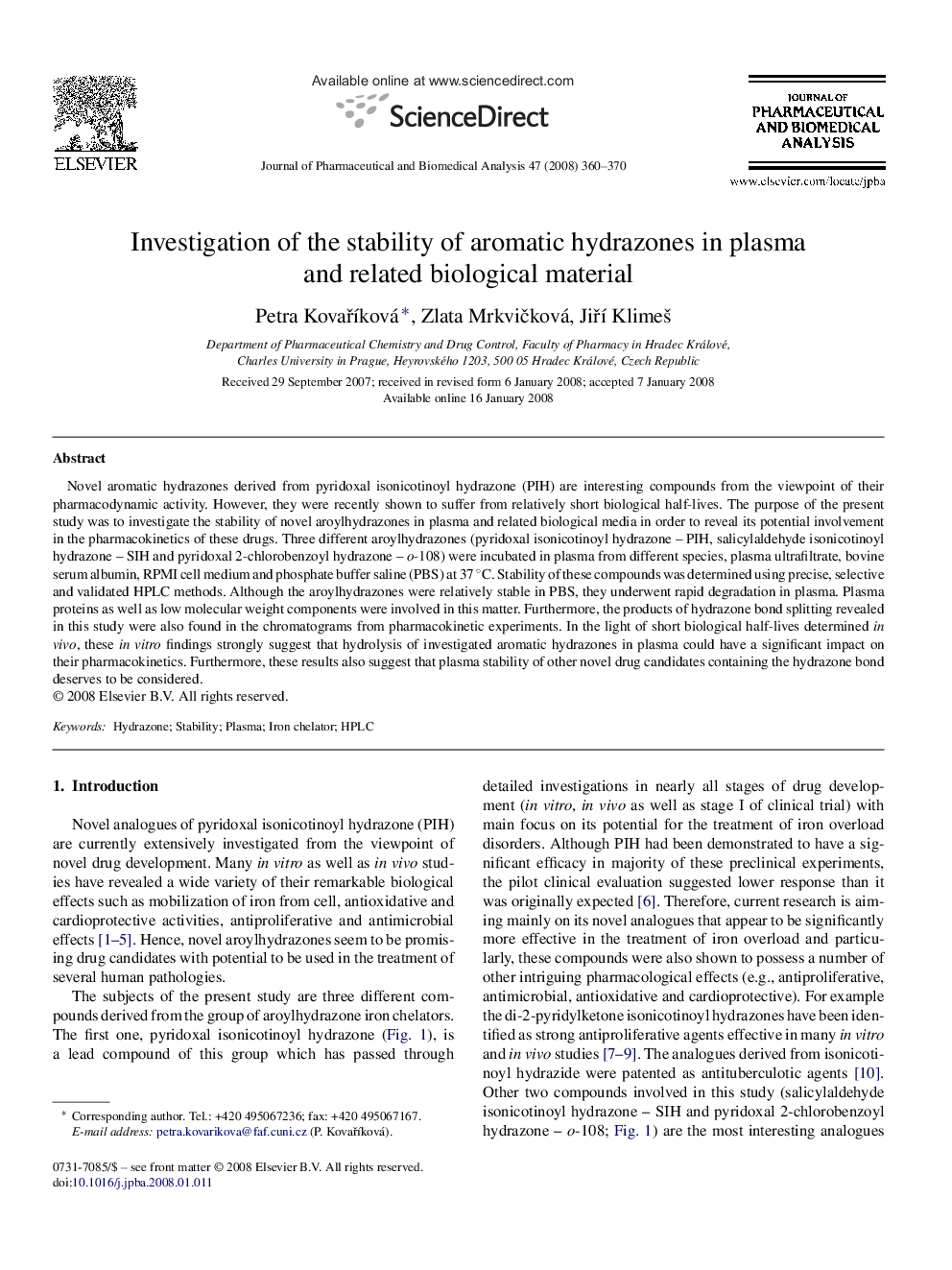| Article ID | Journal | Published Year | Pages | File Type |
|---|---|---|---|---|
| 1223259 | Journal of Pharmaceutical and Biomedical Analysis | 2008 | 11 Pages |
Novel aromatic hydrazones derived from pyridoxal isonicotinoyl hydrazone (PIH) are interesting compounds from the viewpoint of their pharmacodynamic activity. However, they were recently shown to suffer from relatively short biological half-lives. The purpose of the present study was to investigate the stability of novel aroylhydrazones in plasma and related biological media in order to reveal its potential involvement in the pharmacokinetics of these drugs. Three different aroylhydrazones (pyridoxal isonicotinoyl hydrazone – PIH, salicylaldehyde isonicotinoyl hydrazone – SIH and pyridoxal 2-chlorobenzoyl hydrazone – o-108) were incubated in plasma from different species, plasma ultrafiltrate, bovine serum albumin, RPMI cell medium and phosphate buffer saline (PBS) at 37 °C. Stability of these compounds was determined using precise, selective and validated HPLC methods. Although the aroylhydrazones were relatively stable in PBS, they underwent rapid degradation in plasma. Plasma proteins as well as low molecular weight components were involved in this matter. Furthermore, the products of hydrazone bond splitting revealed in this study were also found in the chromatograms from pharmacokinetic experiments. In the light of short biological half-lives determined in vivo, these in vitro findings strongly suggest that hydrolysis of investigated aromatic hydrazones in plasma could have a significant impact on their pharmacokinetics. Furthermore, these results also suggest that plasma stability of other novel drug candidates containing the hydrazone bond deserves to be considered.
